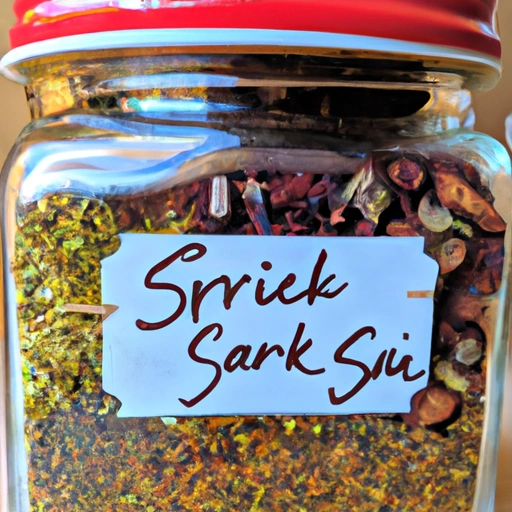Pickling Spice
Description

Pickling spice is a flavorful blend of spices and herbs commonly used in the pickling process to infuse preserved vegetables, meats, and other foods with a complex, aromatic flavor. This mix typically includes ingredients such as mustard seeds, bay leaves, coriander seeds, dill seeds, allspice berries, cloves, ginger, cinnamon, and sometimes peppercorns, red pepper flakes, or cardamom pods. It can be tailored to personal taste or specific recipes, with each ingredient contributing its unique taste and aroma to the final product.
Common uses
Pickling spice is most commonly used in the pickling process for vegetables such as cucumbers to make pickles, as well as for preserving peppers, onions, and other vegetables. It is also used to season corned beef, stews, and boiled meats, and to add depth to broths and marinades.
Nutritional value
Calories
Since pickling spice is used in small amounts, its caloric contribution to a diet is minimal. When used in standard teaspoon or tablespoon measurements (about 2-6 grams in metric), it is not a significant source of calories.
Protein
Pickling spice contains trace amounts of protein.
Fat
This spice blend is generally low in fat with negligible amounts when used in typical culinary applications.
Carbohydrates
Carbohydrates are present in pickling spice, mostly in the form of dietary fiber from the dried herbs and spices.
Vitamins
While pickling spice ingredients can contain various vitamins, the amounts used in recipes are usually too small to contribute significantly to daily vitamin intake.
Minerals
Depending on the specific spices used, the blend can provide trace amounts of minerals like iron, calcium, and magnesium.
Health benefits
The individual spices in pickling spice have been associated with various health benefits, including anti-inflammatory properties, digestive aid, and potential antioxidant effects. However, because they are consumed in small quantities, these benefits are typically subtle when the spice blend is used in pickling or cooking.
Potential risks
For most people, pickling spice poses no significant health risks when consumed in culinary amounts. However, some individuals may be allergic or sensitive to certain spices within the blend and should avoid it to prevent adverse reactions.
Common recipes
Pickling spice is essential in recipes for making classic pickled cucumbers, pickled beets, and brined fruits. It's also a key ingredient in corned beef and can be used in the preparation of sauerkraut and kimchi.
Cooking methods
The spice blend can be added directly to brines, boiled with vinegars for pickling liquids, or wrapped in cheesecloth and steeped in cooking liquids to infuse flavor.
Pairing with other ingredients
Pickling spice pairs well with vinegar-based pickling solutions, savory stews, and rich meats like pork and beef. It also complements the flavors of root vegetables and cabbage.
Summary
Pickling spice is a versatile blend of aromatic spices and herbs that add depth and complexity to a variety of dishes. Its historical roots run deep in culinary traditions around the world, and it continues to be a staple ingredient in many kitchens today. Beyond its culinary uses, it offers a range of subtle health benefits and is generally safe for consumption by most people. Whether used in traditional pickling or as a seasoning, pickling spice is an indispensable component in creating flavorful and preserved foods.